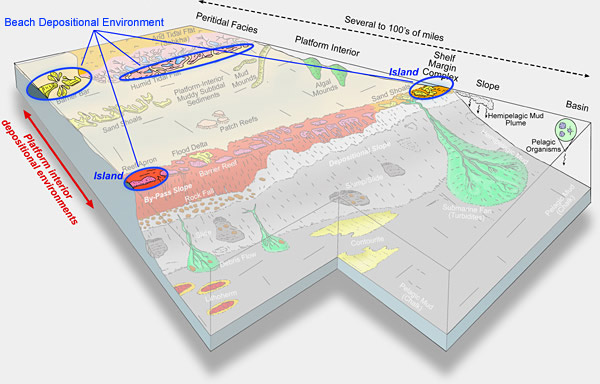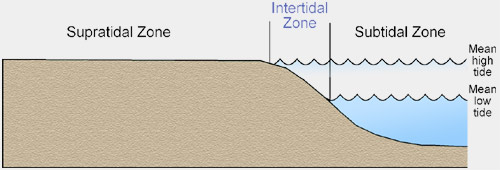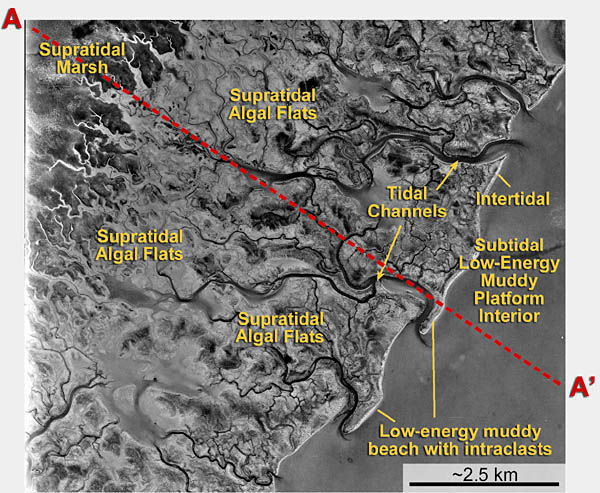Supratidal environment is where sediment is deposited
above normal high tide by spring and storm tides. The sediment
is exposed for long periods to subaerial conditions.
Diagnostic supratidal sedimentary structures include mud
cracks; fine laminations; algal mats and domes; birds-eye
or fenestrae structures; plant, animal, and insect burrows;
intraclasts; and dolomite crusts.
Rock types include laminated mudstones to wackestones, algal
boundstones (stromatolites), intraclasts conglomerates,
and rare storm-deposited grainstones. These rock types are
commonly dolomitized.
Intertidal
environment is where the sediment is deposited
between normal high tide and normal low tide. The sediment
in this zone is generally exposed twice a day to subaerial
conditions at low tide. Tidal channels are common in this
zone.
Diagnostic intertidal sedimentary structures include fine
laminations, algal mats and algal heads, crab and mollusk
burrows, and thin rippled sands.
Rock
types include burrowed to laminated mudstones to wackestones,
algal boundstones with algal heads (stromatolites), thin
crossbedded grainstones, and rare storm-deposited grainstones.
Subtidal environment occurs immediately
seaward of the normal low-tide mark or in a tidal channel
dissecting the flats and is rarely exposed to the subaerial
environment.
The
diagnostic subtidal sedimentary structure is bioturbation.
Rock
types include bioturbated wackestones to mud-rich packstones.
Peloids are a common grain type. |







